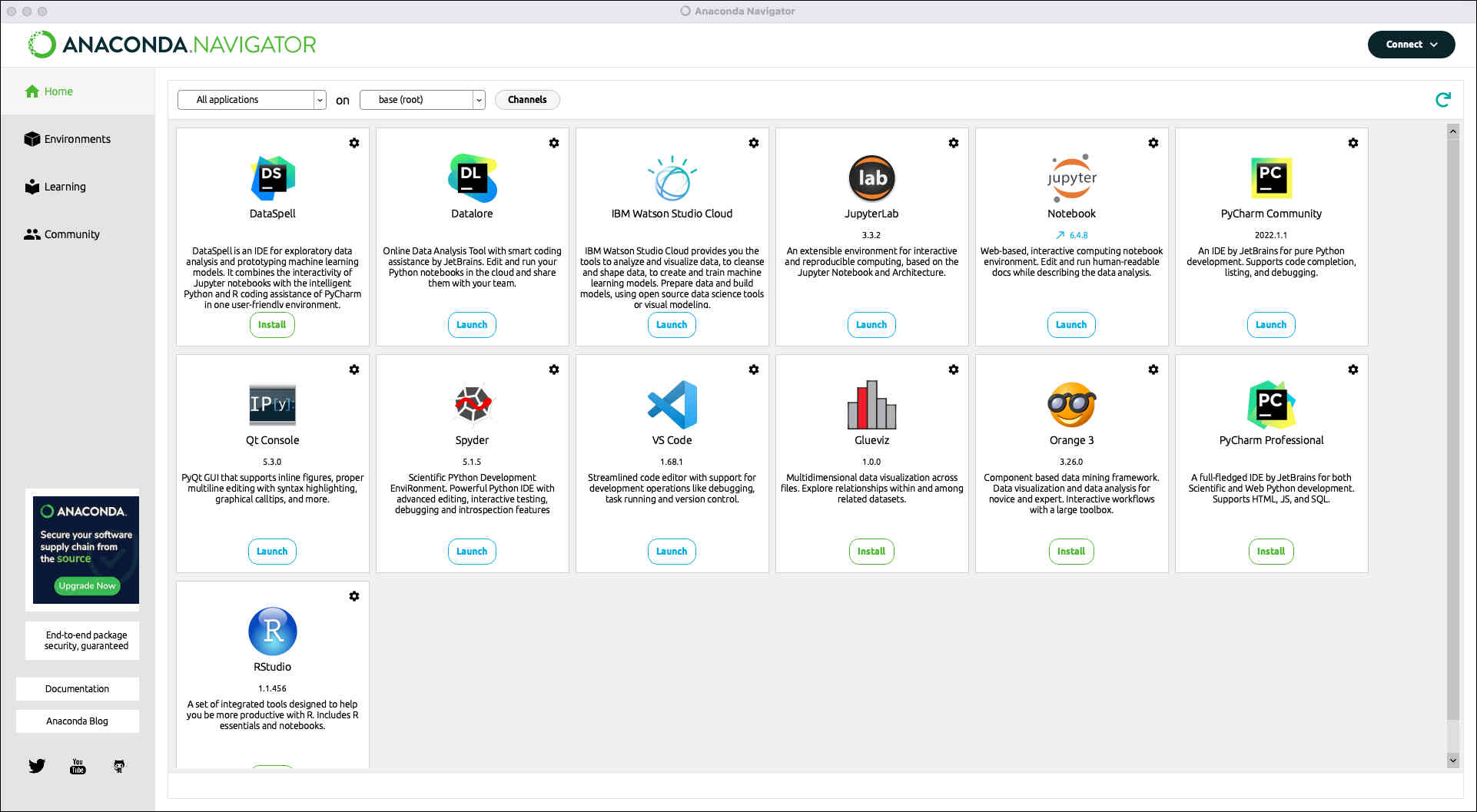Particularly popular with data scientists, Anaconda Navigator presents itself as an open source environment manager. So what exactly is it? What features does it offer? How do I install it? That's what we'll be looking at in this article.
What is Anaconda Navigator?
Launched in 2015 by Continuum Analytics, Anaconda is a platform for managing and distributing Python environments. In concrete terms, it’s a suite of tools facilitating the work of developers and data experts on their various projects.
Anaconda Navigator enables users to create virtual environments, manage packages and dependencies, and access various programming and analytics tools. All this while automating the most complex tasks.
Ultimately, the platform offers you a flexible and efficient development space, while reducing the challenges associated with configuration and dependency management.
Good to know: Anaconda Navigator is the visual interface for launching APIs and managing environments. But you can also use Anaconda Prompt to access the Conda tool.
What are the advantages of Anaconda Navigator?
If Anaconda Navigator is the preferred tool of Data Scientists, it’s thanks to its multiple functionalities. Here are the main ones:
- The creation of virtual environments: the idea is to isolate data projects in order to avoid version or package conflicts. Thanks to these virtual environments, each project has its own Python version.
- Developers can therefore work on different projects with specific dependencies without any interference.
- Installing Python packages: as a reminder, packages are additional functionalities in the code.
- Anaconda Navigator lets you write efficient, powerful code (particularly useful if you’re working in machine learning), without the need to memorize complex commands.
- As an added bonus, the platform takes care of managing these packages, including updating and deleting them.

- Integration of programming and analytics tools: Jupyter Notebook, RStudio and Spyder are directly integrated and configured for optimal workflow.
- Simplified deployment: Anaconda Navigator lets you create exportable environment files, making it easy to share and deploy your projects on other systems.
- Environment tracking: Anaconda Navigator’s graphical interface lets you view existing Python environments, installed packages and their versions.
Thanks to all these features, Anaconda Navigator is now one of the main tools used by data scientists.
How do I install Anaconda Navigator?
Anaconda Navigator is available for Windows, macOS and Linux. To install it, download the version corresponding to your operating system.
Then run the program and follow the instructions (each operating system has its own steps).
That said, it is possible to install Anaconda Navigator as a default program at start-up. Depending on your preferences, simply check or uncheck the option.
Join DataScientest to learn about data science
Anaconda Navigator is one of the must-have tools for data scientists. But mastering all these features doesn’t happen overnight. It’s essential to learn them, both through theoretical courses and practical exercises. DataScientest makes it possible. Through our data science training course, you’ll learn how to use this platform, as well as all the other tools essential to data scientists.










